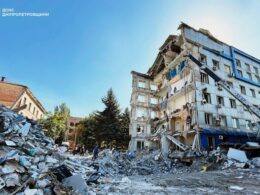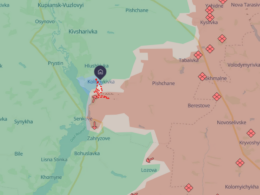Conflict Armament Research (CAR) has discovered that a ballistic missile produced by North Korea and fired by Russia in Ukraine contains more than 290 non-domestic electronic components, primarily from companies based in the United States.
Between 30 December 2023 and 7 February 2024, Russian forces attacked Ukraine with at least 24 North Korean-origin ballistic missiles, Interfax Ukraine reported, citing Ukraine’s Prosecutor General Andriy Kostin. These attacks resulted in the death of 14 civilians and injuries to over 70 others.
CAR's 13th dispatch since the full-scale Russian invasion of Ukraine in February 2022 marks the first public identification of North Korea's reliance on non-domestic technology for its missile program. The missile, likely a KN-23 or KN-24, was documented by a CAR field investigation team in Kharkiv, Ukraine's second-largest city, after an attack on 2 January 2024.
https://twitter.com/EuromaidanPress/status/1742139841079361596?s=20
CAR's documentation shows that 75% of the components are linked to companies incorporated in the United States, with 16% linked to European companies and 9% to Asian companies. The organization will dispatch trace requests to these companies to further investigate the acquisition network.
"From marks observed on these components, CAR identified 26 companies, headquartered in eight jurisdictions (China, Germany, Japan, Netherlands, Singapore, Switzerland, Taiwan, and the United States)," that are linked to the production of these components," the report reads.
CAR's findings highlight the challenges of controlling the export of commercial electronic components and the reliance of countries like North Korea, Iran, and Russia on global semiconductor industry. The missile's components, many produced within the last three years, suggest that North Korea has developed a robust acquisition network capable of circumventing international sanctions.
The presence of a large proportion of recently produced non-domestic electronic components in the North Korean missile suggests that the country has been able to produce advanced weapons and transfer them to the Russian Federation despite United Nations Security Council sanctions in place since 2006. This raises concerns about the effectiveness of global non-proliferation regimes and the challenges associated with regulating the export of commercial semiconductor components.
Analyst: Russian oil money turning North Korea into “ideal military factory”
The findings also underscore the importance of field documentation and monitoring in the effectiveness of export control and sanction mechanisms. The global nature of the semiconductor industry and its reliance on third-country distribution channels highlight the need for increased vigilance in export control and sanctions compliance.
On 7 February, Russia attacked Kharkiv with five missiles, two of which were of North Korean origin, according to Kharkiv regional police chief Serhii Bolvinov. Preliminary findings by experts indicate that these are North Korean KN-23 (Hwasong-11GA) missiles.
Among the six ballistic missiles Russia launched against Ukraine on the morning of 15 February, there might have been a Korean KN-23 missile, according to a report about the downed missile by Ukraine's Air Forces.
Intelligence officials from the US-allied countries say that Moscow may be trying to help Pyongyang with access to the international financial system in exchange for missiles and ammunition, as per The New York Times. The extent of Russia’s provision of military technology to North Korea remains uncertain, but the establishment of new banking ties signals a deepening relationship between the two countries. Reportedly, Russia has permitted the release of $9 million from $30 million in frozen North Korean assets held in a Russian financial institution, funds the economically struggling country intends to use for purchasing crude oil.
Read also:
- Ecuador backtracks on sending arms to Ukraine after Russia banned imports of its bananas, flowers
- Chinese FM assures Ukraine that Beijing does not sell lethal weapons to Russia
- Mapping North Korea’s discreet artillery ammo route to Russia





